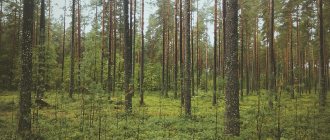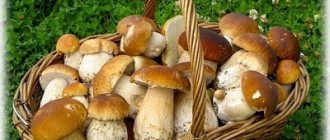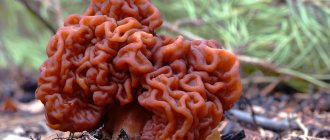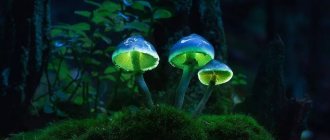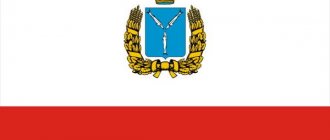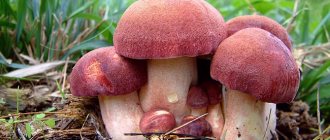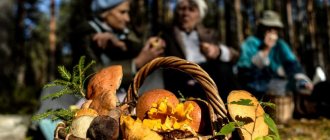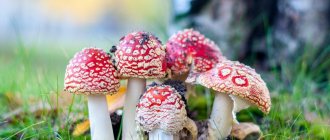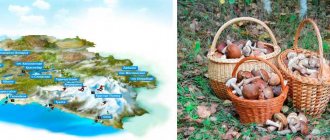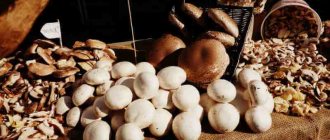What mushrooms are collected according to the seasons?
| Mushrooms | Months |
| Spring | |
| Morels | April May. |
| Butter | April May. |
| Obabki | May. |
| Russula | May. |
| Summer | |
| Boletus | June August. |
| Obabki | June August. |
| Boletus | June August. |
| Chanterelles | June August. |
| Butter | June August. |
| Russula | June August. |
| Honey mushrooms | July August. |
| Milk mushrooms | July August. |
| Saffron milk caps | August. |
| Autumn | |
| Boletus | September October. |
| Obabki | September October. |
| Boletus | September October. |
| Saffron milk caps | September. |
| Chanterelles | September. |
| Butter | September. |
| Honey mushrooms | September-November. |
| Milk mushrooms | September October. |
| Russula | September October. |
| Oyster mushrooms | november. |
Mushrooms are a tasty and valuable food product, not inferior in nutritional value to meat. But they should be collected with extreme caution, choosing familiar forest routes and undisputed varieties.
Poisonous mushrooms of the Moscow region. Be careful when going on a quiet hunt!
Mushrooms are a low-calorie food rich in protein, lecithin, vitamin B2, zinc and vitamin D. However, this kingdom of nature includes more than just healthy members. Poisonous mushrooms, many of which are very similar to edible ones, cause the death of thousands of people every year. poisonous mushrooms in the Moscow region look like .
Poisonous mushrooms of the Moscow region. Symptoms of poisoning and first aid
Photo source: pinterest.com
All mushrooms in the capital region, belonging to the group of inedible and conditionally edible, are toxic. Even with prolonged heat treatment, they do not lose their harmful properties. Poisonous mushrooms in the Moscow region pose a particular danger. Consumption of even the smallest piece of some of them can lead to serious consequences for the human body, and sometimes even death. The first signs of poisoning are:
- gastrointestinal disorders: abdominal pain, diarrhea, vomiting;
- severe headaches, choking, increased sweating;
- rapid heartbeat, convulsions;
- hallucinations, fainting.
When the first signs of poisoning appear, you need to call an ambulance. Before the doctors arrive, the poisoned person must urgently provide first aid.
1. Gastric lavage. If vomiting does not begin, it must be induced artificially. After this procedure, the victim must take activated carbon or any other sorbent.
2. Lay the patient on a flat surface and apply heating pads to the limbs.
3. It is necessary to regularly give the poisoned person warm liquid to drink. Avoid tea, coffee or juices. All you need is water!
Remember that the sooner you begin the above measures, the greater the victim’s chances of survival. Indeed, in the absence of proper assistance, death from poisoning with poisonous mushrooms occurs in 90% of cases.
Poisonous mushrooms of the Moscow region. fly agaric
Photo source: mkrychnovatlashub2.estranky.cz
Even people who have never taken part in a quiet hunt in their lives know that fly agaric is a poisonous mushroom. There are more than 600 species of fly agarics, among them there are also conditionally edible ones. However, mycologists (scientists who study mushrooms) still advise against collecting forest beauties, which contain muscarine and muscimol, which determine the poisonous, psychotropic and toxic effect.
All fly agarics have plate-shaped spherical or flat caps of various colors with a diameter of 4.5-19 cm. The cylindrical shape of the white leg expands towards the base and does not exceed 20 cm in length. There is always a soft hanging ring at the top of the mushroom. You can meet fly agarics from mid-summer to the end of September in mixed forests, spruce forests and birch groves.
Poisonous mushrooms of the Moscow region. Death cap
Photo source: silesmicologico.com
Another mushroom belonging to the fly agaric genus. The toadstool is the queen of the world of poisonous mushrooms, as it is its deadliest member. Death after eating this inconspicuous-looking mushroom if no help is provided occurs in 90% of cases; the first signs of poisoning become noticeable after 5-20 hours. Therefore, it is worth taking a closer look at this odious mushroom, which grows in deciduous and mixed forests of the Moscow region from the very beginning of summer until the first frost.
The pale grebe has a white or white-green lamellar cap with a diameter of 5.5-14 cm, under which there is a loose, often torn, light ring. The cylindrical stem of the mushroom reaches a height of 15 cm and a thickness of 2 cm. There is practically no smell. The toadstool can be confused with the champignon, but the latter does not have a cap ring.
Poisonous mushrooms of the Moscow region. Satanic mushroom
Photo source: wikiwand.com
On the Internet and specialized literature you can find information that this mushroom is classified as conditionally edible. However, it should be remembered that it becomes edible only after soaking for many hours. The satanic mushroom should also be cooked for 10-12 hours, otherwise it can cause irreversible damage to the spleen and liver. The conclusion suggests itself: when you see this rather beautiful mushroom in the forest, avoid it.
The inhabitant of dells and oak groves has a cushion-shaped cap of olive-gray color with a diameter reaching 30 cm. The bottom of the cap and the barrel-shaped leg, thickened at the root part, 6-15 cm long and up to 10 cm thick, are red-pink in color. If you cut the cap, the cut will quickly turn blue. The satanic mushroom can easily be confused with boletus or boletus, but these two edible mushrooms have a brown cap and always remain white when cut.
Poisonous mushrooms of the Moscow region. Pig
Photo source: grzyby.web-album.org
Even at the end of the 20th century, pig mushroom was considered a conditionally edible mushroom. But due to the fact that in recent years the ecological situation in the Moscow region has worsened, this species is now classified as poisonous, since it tends to accumulate radioactive isotopes of copper and cesium. Svinushki are widespread in the Moscow region, most often they can be found in spruce forests and wet mixed forests.
There are two types of pigs: thick and thin. The latter is distinguished by a larger diameter of the velvety cap and a thin stem. Mushrooms are brown in various shades. The upper lamellar part reaches 12 cm in volume, the height of the stem is up to 5.5 cm. When pressed, the flesh of the mushroom always changes color to a darker one.
Poisonous mushrooms of the Moscow region. Galerina bordered
Photo source: jcdegids.be
Previously, this mushroom was not included in the list of “Poisonous mushrooms of the Moscow region”, as it grew exclusively in the countries of northern Europe, Asia, North America and Australia. In 2015, it was first found in the capital region. This is likely due to climate change. Galerina contains the organic poison amatoxin and is a deadly mushroom, poisoning with which causes death in 85% of cases.
The poisonous galerina grows from late July to October. It has a thin plate-like cap, not exceeding 4 cm in diameter, and a long, thin stalk covered with whitish spots with a ring at the top. The mushroom changes its color depending on air humidity: when dry it is yellowish-brown, when wet it is honey-colored. The galerina grows bordered by tufts and is practically indistinguishable from the edible summer honey mushroom.
Poisonous mushrooms of the Moscow region. Mycena pure
Photo source: first-nature.com
Another mushroom that has a slight resemblance to honey mushroom. Contains muscarine and is hallucinogenic. Mycena is found everywhere in mixed and deciduous forests, preferring the trunks of dead trees. In the Moscow region it grows from May to the end of summer.
The mushroom has a rich palette of colors: from purple to gray-yellow. The cap is lamellar, thin, with a mucous surface. In small mushrooms it is dome-shaped, then gradually opens and reaches a diameter of 6 cm. A thin hollow stalk 5-8 cm long always matches the cap in shade. Pure mycena has a very unpleasant, repulsive odor, so it is very easy to distinguish it from other mushrooms.
Poisonous mushrooms of the Moscow region. Hebeloma adhesive
Photo source: quazoo.com
The second name of the mushroom is false valu. Contains a number of little-studied toxins that can cause severe headaches, gastrointestinal upset, asthma attacks and dysfunction of the musculoskeletal system. One of the features of hebeloma is the disgusting smell of horseradish and radish.
False valu grows in groups in predominantly mixed forests. Painted greyish-brown. The mucous cap on top is wide, lamellar, the diameter does not exceed 14 cm. The stalk is hollow, thickened at the base. Height - 5-7 cm. The pulp of the mushroom is watery.
Poisonous mushrooms of the Moscow region. Lepiota crest
Photo source: linnet.geog.ubc.ca
Very often, because of the plate-shaped cap covered with brown and beige scales, this mushroom is called silverfish. Lepiota grows from early June to late September in mixed forests and coniferous forests, and is also found in vegetable gardens and fields.
The caps of young silverfish are always bell-shaped, while those of adult representatives are always shaped like an umbrella. Diameter - 5.5 cm. The ring is white, narrow, with a faint red tint. The leg is thin and smooth, its length does not exceed 6 cm. The smell of lepiota is very unpleasant and resembles the smell of radish. Due to the scaly surface of the cap, inexperienced mushroom pickers sometimes mistake this mushroom for an autumn honey fungus.
Poisonous mushrooms of the Moscow region. Bile mushroom
Photo source: mykoweb.com
In Russia, the gall fungus is known as mustard. It received this name due to its bitter taste, which intensifies when cooked. Some mushroom pickers still collect bitters for pickling, since after prolonged soaking and under the influence of acetic acid, the bitterness goes away. However, we do not advise you to conduct such experiments - the gall fungus contains toxic substances that can lead to the development of cirrhosis of the liver.
A young mustard has a semicircular brown cap, which gradually takes on a flat shape as the mushroom grows. Its diameter is 6-14 cm. The tubular part can be of various colors: from dirty white to brown-gray, but always with a pink tint. The leg is yellowish, up to 10 cm high, turns pink when cut. The gall mushroom is very similar to boletus or boletus, from which it differs only in its bitter taste and a tubular layer of dirty pink color.
Many poisonous mushrooms in the Moscow region cause irreversible consequences in the human body. If you are not sure what the name of the mushroom you are going to put in the basket is, it is better to leave it to continue growing in the forest. Also, do not forget that even edible mushrooms have the ability to absorb harmful substances from the environment. Therefore, try to go out on a quiet hunt in an ecologically clean area and avoid the old representatives of this kingdom of wildlife.
That's all for us . We are very glad that you visited our website and spent a little time to gain new knowledge.
Join our Vk group to stay updated on new events.
We also recommend reading the article: Giant trees of the planet. The size of these plants is amazing!
Did you like this article? We will be glad if you share the link of this page with your friends


